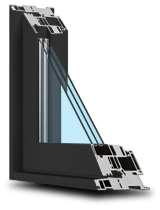Impact-Resistant Glass: Benefits and Applications for Home Security
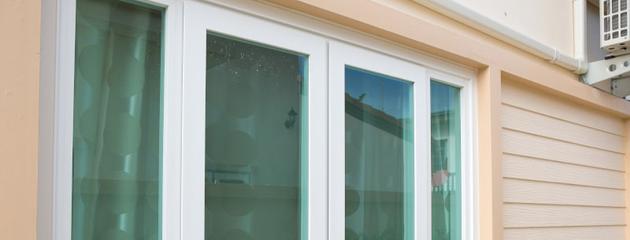
Key Takeaways
- Impact glass is engineered with multiple layers and interlayers, offering superior strength and safety compared to standard glass.
- It is a significant deterrent to forced entry due to its shatter-resistant design and rigorous testing against impact and intrusion.
- Beyond security, impact-resistant glass enhances energy efficiency, reduces noise, and provides UV protection, making it a wise choice for residential homes in Canada.
- Experts from Canadian Choice Windows & Doors highlight the long-term value of their products, especially in areas prone to storms or break-ins.
What makes impact glass different from traditional window glass?
During a Canadian windstorm, traditional glass may crack or shatter under pressure. Impact-resistant glass is engineered to withstand exactly these conditions. Regular glass might crack or shatter on impact. Impact glass is specifically designed to resist impact and forced entry. Its layered structure sets it apart from traditional glass.
What is impact glass?
Impact glass, also known as laminated safety glass, is a highly durable type of glazing system that incorporates multiple layers of material. Unlike regular glass, which is a single pane and breaks into sharp shards, impact glass is built to hold together even when broken.
How is impact glass made?
The process of manufacturing impact glass involves bonding two panes of glass with an interlayer, typically made from materials such as polyvinyl butyral (PVB) or ethylene-vinyl acetate (EVA). These materials provide flexibility and cohesion.
Manufacturing Process Summary:
- Glass Layering : Two (or more) sheets of glass are cut to size.
- Interlayer Application : A PVB or EVA interlayer is sandwiched between the glass sheets.
- Heat and Pressure : The entire assembly is exposed to heat and pressure, causing the interlayer to bond firmly to the glass surfaces.
- Tempering (optional) : In some cases, the glass is also tempered to enhance its strength.
According to the Laminating Safety Glass Association of North America, this process results in a glass unit that remains intact even when shattered — providing crucial protection in extreme conditions.
Impact Glass vs. Traditional Glass
Here’s a quick comparison:
| Feature | Traditional Glass | Impact Glass |
|---|---|---|
| Layers | Single pane | Two or more layers + interlayer |
| Breakage | Sharp, dangerous shards | Cracks but stays in place |
| Resistance to Force | Low | High (tested for hurricane & impact) |
| Sound Insulation | Minimal | High |
| UV Filtering | Low | Excellent |
| Energy Efficiency | Basic | Superior insulation properties |
Helen Sin , Consumer Success Manager at Canadian Choice Windows & Doors , notes:
“There is a significant difference between standard and impact-resistant glass. The latter is engineered to enhance both home protection and occupant safety.”
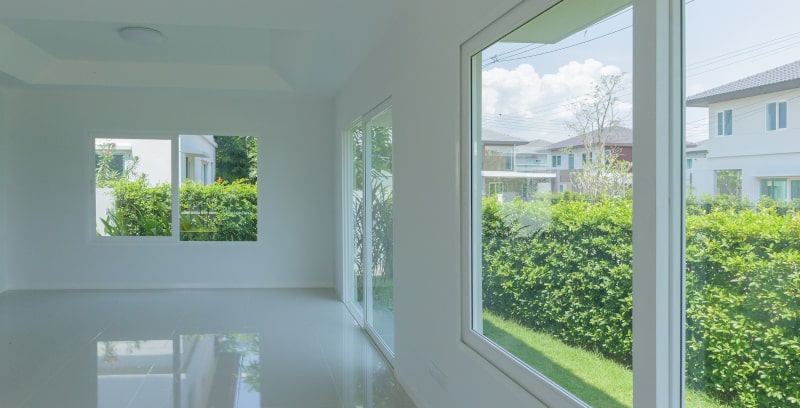
How does impact-resistant glass improve home security?
Beyond storm protection, impact-resistant glass also defends against break-ins, vandalism, and accidental damage. That’s where impact-resistant glass proves its worth.
Shatter-Resistance: A Game Changer
Unlike standard glass, which can be broken with a single blow, impact glass resists penetration. Even when it breaks, the interlayer holds the shards together. This dramatically slows down or prevents unauthorized entry.
This glass is tested under strict conditions. The ASTM E1996 and ASTM E1886 standards (American Society for Testing and Materials) are used in North America to certify the impact resistance of materials. In Europe, EN 356 is the equivalent standard. These tests include:
- Missile impact simulation (e.g., a 9-pound 2x4 launched at 50 km/h)
- Cyclic pressure testing to replicate hurricane winds or repeated physical assaults
Forced Entry Resistance
Impact-resistant glass significantly increases the time and effort required for forced entry, making homes far less attractive targets for intruders.
According to the Canadian Centre for Justice Statistics, homes with reinforced or impact-resistant windows report lower rates of property crime compared to those with standard glazing.
What are the key benefits of using security glass in residential properties?
Security isn’t the only reason homeowners are turning to impact-resistant windows. These windows come with a host of other advantages that make them a wise investment.
Enhanced Safety & Protection
- Debris protection during storms or accidents
- Intrusion resistance
- Fire protection (some interlayers can delay the spread of flames)
UV Filtering
Impact glass can block up to 99% of UV rays, protecting furnishings, flooring, and artwork from fading.
Energy Efficiency
Laminated glass improves thermal insulation, reducing heating and cooling costs throughout the year.
- Keeps homes warmer in winter and cooler in summer
- Reduces HVAC usage
- Helps meet Energy Star standards in Canada
Sound Insulation
Multiple layers and the interlayer help dampen external noise — ideal for homes near busy roads, airports, or schools.
| Benefit | Regular Glass | Impact/Security Glass |
|---|---|---|
| UV Protection | Limited | Up to 99% |
| Energy Savings | Minimal | 10–30% reduction |
| Noise Reduction | Poor | Significant |
| Safety Against Force | Poor | Excellent |
Where should you install impact-resistant windows in your home?
Impact-resistant windows are a significant investment, so strategic placement is crucial. Here are the most effective locations for installing a residential property.
Ground Floor: Your First Line of Defence
Windows on the ground floor are the most common entry points for intruders. Due to their accessibility, they are susceptible to both forced entry and storm damage.
- Bedrooms
- Living rooms
- Home offices with electronics or valuables
According to user discussions on Houzz, homeowners often prioritize ground-floor installations for peace of mind and insurance benefits.
Basement Windows: Often Overlooked
Though small, basement windows can be prime targets for entry — especially in homes with window wells. Security glass in these spots helps prevent:
- Break-ins
- Water or debris intrusion during storms
- Injuries from shattered glass in confined spaces
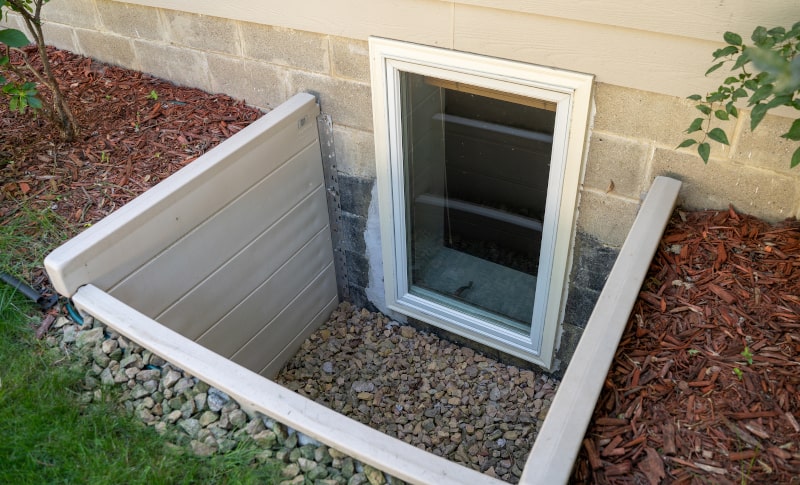
Patio and Sliding Doors: The Weakest Link
Large patio doors and sliding glass systems are notorious for being easy to break and difficult to secure. Replacing these with laminated impact glass adds protection without compromising on aesthetics or daylight.
File name:
impact-resistant-patio-sliding-glass-door.jpg
Alt text:
Modern sliding patio door with impact-resistant glass in a Canadian home
Title:
Reinforced sliding glass doors with laminated impact-resistant glazing
Tony Wong notes:
“Patio and sliding doors are among the most vulnerable points in a home’s exterior. Upgrading them with impact-resistant glass provides a significant security improvement,” notes Tony Wong, Project Manager at Canadian Choice Windows & Doors™.”
Windows Facing Extreme Weather
If you live in storm-prone regions, such as southern Ontario or near large bodies of water, wind pressure and flying debris can pose a significant threat. Install impact-resistant windows in:
- South- or west-facing windows
- Upper-level dormers exposed to wind
- Any window without eaves or coverage
Can security glass withstand severe weather events, such as hurricanes or hail?
Absolutely. In fact, weather resistance is one of the main reasons impact-resistant glass was developed.
Hurricane Testing Standards
Security glass undergoes rigorous testing to ensure it can withstand high-velocity wind and debris. These include:
- Extensive Missile Test (ASTM E1996) : A 9-pound wood beam is shot at the glass at approximately. 80-100 km/h.
- Cyclic Wind Pressure Test (ASTM E1886) : Simulates repeated gusting winds by applying fluctuating air pressure.
Windborne Debris & Hail
Impact glass resists penetration from flying tree limbs, signage, hail, and other storm-driven projectiles. Laminated layers prevent glass from collapsing inward and exposing the home’s interior.
- Hail resistance : Measured using tests similar to UL 2218 standards.
- Flying debris : Common in storms from May through October in Eastern Canada.
What is the difference between safety glass and security glass?
Though the terms are often used interchangeably, safety glass and security glass serve different purposes. Let’s break down the core distinctions.
Safety Glass
Designed to reduce the risk of injury when broken. There are two main types:
- Tempered Glass : Heat-treated to increase strength. When it breaks, it shatters into small, blunt pieces.
- Laminated Glass : Two or more panes bonded with a plastic interlayer. It holds together when shattered.
Security Glass
Built for resistance against impact, forced entry, or bullets, depending on the rating. Typically consists of multiple laminated layers, possibly with polycarbonate or additional reinforcements.
| Feature | Safety Glass (Tempered) | Safety Glass (Laminated) | Security Glass |
|---|---|---|---|
| Breakage Pattern | Crumbles safely | Cracks, stays intact | Cracks, resists penetration |
| Application | Shower doors, interior | Skylights, auto windshields | Exterior, entry, storm areas |
| Forced Entry Resistance | Low | Medium | High |
| Bullet Resistance | No | No | Yes (in some types) |
When to Use Each
- Use tempered safety glass for interior applications where breakage risk is high but intrusion risk is low (e.g., bathrooms).
- Use laminated safety glass for moderate security and UV filtering — ideal for windows and doors.
- Use security glass in entry points, ground floors, and hurricane-prone zones, where forced entry or extreme weather are concerns.
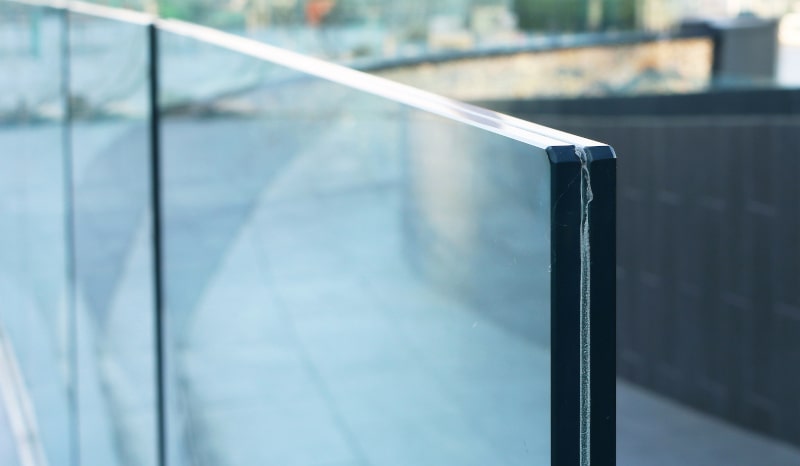
How do impact-resistant windows compare to shutters or security bars?
When it comes to home security, homeowners often ask: “Are impact windows better than security bars or shutters?” Each option has its strengths, but there are key differences in functionality, aesthetics, and long-term value.
Impact Windows vs. Shutters
Hurricane shutters are a popular option in storm-prone areas. They are mounted externally and deployed before a storm to protect windows from flying debris. However, they require manual operation, maintenance, and storage space.
-
Pros
:
- Effective in high-wind storms
- Some styles are removable (accordion or panel)
- Less costly upfront
-
Cons
:
- Require pre-storm preparation
- Not aesthetically pleasing
- No protection against burglary or noise
Impact Windows vs. Security Bars
Security bars offer a visible deterrent against intruders. They're typically installed over basement or ground-floor windows.
-
Pros
:
- Strong burglary deterrent
- Relatively low cost
-
Cons
:
- Obstructs views and natural light
- Can reduce resale value
- May violate fire escape regulations if not retractable
Comparison Table
| Feature | Impact Windows | Hurricane Shutters | Security Bars |
|---|---|---|---|
| Storm Protection | Yes | Yes | No |
| Burglary Protection | Yes | No | Yes |
| Visual Appeal | High | Low to Moderate | Low |
| Ongoing Maintenance | Low | Moderate | Low |
| Ease of Use | Passive (always active) | Manual deployment | Fixed or retractable |
| Price (avg. per window) | $700–$1,200 CAD | $150–$500 CAD | $100–$400 CAD |
Are impact-resistant windows energy efficient and eco-friendly?
Security might be the initial reason homeowners consider impact-resistant windows, but their energy efficiency and eco-friendly benefits offer compelling long-term value.
Insulation and Energy Savings
Impact-resistant windows often feature insulated frames and Low-E (low-emissivity) coatings, which enhance thermal performance. These features help reduce:
- Heat loss during winter
- Heat gain during summer
- HVAC energy consumption
Low-E Coatings
Low-E coatings reflect infrared heat while allowing natural light. Many impact-resistant windows come with double or triple glazing combined with Low-E coatings.
- Reduces interior fading from UV rays
- Maintains indoor comfort without overuse of heating or cooling
- Meets or exceeds Energy Star Canada guidelines
Sustainable Manufacturing and Materials
Many impact-resistant window products are certified under LEED (Leadership in Energy and Environmental Design) or Greenguard for low emissions.
- Recyclable aluminum or fibreglass frames
- Non-toxic interlayers like PVB or SentryGlas®
- Durability reduces replacement frequency, lowering material waste
What certifications or standards should impact-resistant windows meet?
When selecting impact windows, certifications are critical. These standards ensure the product has been rigorously tested and approved for strength, durability, and compliance with building codes.
Key Certifications and Standards
| Certification / Standard | Purpose & Authority |
|---|---|
| ASTM E1996 / E1886 | U.S. standards for impact resistance and wind pressure |
| Miami-Dade County NOA | World-renowned for hurricane performance testing |
| ANSI Z97.1 | U.S. safety glazing standard for glass breakage behaviour |
| CSA A440 Series (Canada) | Canadian performance standards for air, water, and impact |
| EN 356 (Europe) | Glass resistance to manual attack |
ASTM & Miami-Dade Certification
The ASTM E1996/E1886 standards involve impact tests with large projectiles and repeated air pressure cycles. Miami-Dade County goes a step further, requiring:
- Missile level testing (9-lb 2x4 at 80 km/h)
- 10,000+ pressure cycles simulating hurricane winds
This certification is often considered the gold standard for severe weather resilience.
How to Verify Certification
- Look for labels etched into the glass or affixed to frames
- Request manufacturer test reports or NOA certificates
- Confirm inclusion in Energy Star Canada or Miami-Dade Approved product databases
Is impact-resistant glass the right choice for your home?
After everything we’ve explored, one thing is clear: impact-resistant glass goes far beyond basic window performance.
Recap of Key Benefits
- Safety: Holds together when shattered, protecting from debris and injury.
- Security: Deters intruders and resists forced entry.
- Energy Savings: Helps regulate indoor temperature and reduce utility costs.
- UV Protection: Blocks up to 99% of UV rays.
- Noise Reduction: Insulates from outside noise.
- Property Value: Boosts resale appeal and ROI.
Pros and Cons Summary
| Factor | Pros | Cons |
|---|---|---|
| Security | Shatter-resistant, burglary deterrent | Higher initial cost |
| Energy Efficiency | Low-E, insulated, reduced HVAC use | Needs professional installation |
| Weather Resistance | Hurricane/hail protection | May require code compliance check |
| Appearance | Clean, modern finish | Limited frame colour options |
| Value/ROI | Increases resale, lowers insurance | ROI depends on the market |
Suppose you're considering ways to modernize your home, reduce risks, or prepare for resale. In that case, impact-resistant windows are a practical upgrade that combines safety, comfort, and long-term value for homeowners in Canada.
Authoritative Sources and Links Used:
- ASTM Standards Directory
- CSA Group Standards
- Natural Resources Canada
- Energy Star Canada
1000’s of Colours & Textured Finishes
Transform your home from ordinary to extraordinary with our new coloured and non-glare textured finishes. Available in a wide array of colours as well as custom matched colours for your very own personalized design.
Our Most Popular Replacement Window Colours:






